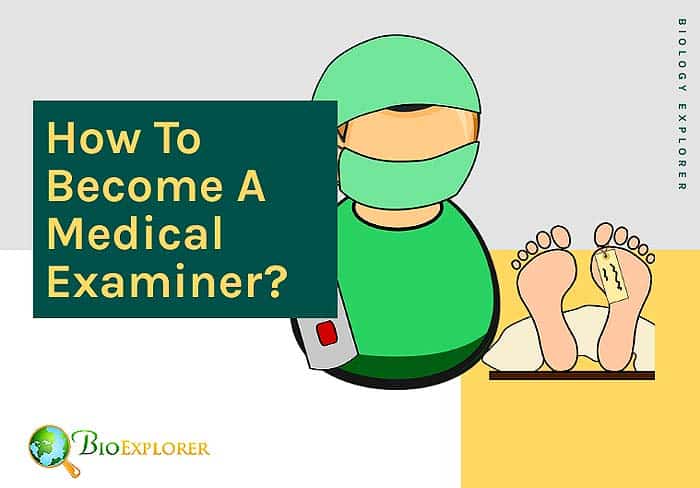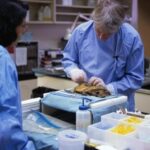Becoming a medical examiner is a challenging yet profoundly rewarding career path, demanding a unique blend of medical acumen, investigative prowess, and unwavering dedication to justice. This profession involves meticulously examining deceased individuals to ascertain the cause and manner of death, often playing a crucial role in criminal investigations and public health initiatives. For those considering this vocation, a comprehensive understanding of the required education, training, and professional responsibilities is paramount. This detailed overview elucidates the multifaceted journey toward becoming a medical examiner.
I. Foundational Education: The Pre-Medical Pathway
The initial step towards a career as a medical examiner begins with a robust undergraduate education. Aspiring medical examiners should pursue a bachelor’s degree with a strong emphasis on science-related coursework. Core subjects should include biology, chemistry (both general and organic), physics, and mathematics. These disciplines provide the fundamental scientific knowledge necessary for subsequent medical studies. Furthermore, coursework in areas such as anatomy, physiology, and genetics can offer a significant advantage. Maintaining a high grade point average (GPA) is crucial, as medical school admissions are highly competitive.
Beyond academics, relevant extracurricular activities and experiences can bolster one’s application. Volunteering in a hospital, shadowing physicians (particularly pathologists), or participating in research projects related to forensic science or medicine demonstrates a genuine interest in the field. These experiences provide invaluable insights into the realities of a medical career and can strengthen an applicant’s candidacy.
II. Medical School: Mastering the Art of Medicine
Upon completion of a bachelor’s degree, the next step is to gain admittance to medical school. This typically requires passing the Medical College Admission Test (MCAT), a standardized exam that assesses critical thinking, problem-solving skills, and knowledge of scientific concepts. A competitive MCAT score, combined with a strong undergraduate GPA and compelling personal statement, is essential for securing acceptance into a reputable medical school.
The medical school curriculum is rigorous and comprehensive, encompassing a wide range of medical disciplines. The first two years typically focus on foundational sciences such as anatomy, physiology, biochemistry, pharmacology, and pathology. These courses provide the theoretical knowledge necessary for understanding disease processes and human physiology. The latter two years involve clinical rotations, where students gain practical experience in various medical specialties, including internal medicine, surgery, pediatrics, and obstetrics/gynecology. These rotations provide hands-on experience in patient care and expose students to the diverse aspects of medical practice.
III. Residency in Pathology: Specializing in Disease
After graduating from medical school, aspiring medical examiners must complete a residency in pathology. Pathology is the branch of medicine that deals with the study of disease. A pathology residency typically lasts four years and provides extensive training in both anatomic and clinical pathology. Anatomic pathology focuses on the examination of tissues and organs to diagnose disease, while clinical pathology involves the analysis of blood, urine, and other bodily fluids. During residency, trainees learn to perform autopsies, examine microscopic slides, and interpret laboratory test results. They also gain experience in forensic pathology, the subspecialty that deals with the investigation of deaths.
IV. Fellowship in Forensic Pathology: Sharpening Forensic Skills
Following a pathology residency, those aspiring to become medical examiners must complete a fellowship in forensic pathology. This specialized training typically lasts one to two years and provides in-depth knowledge and skills in the investigation of deaths. During the fellowship, trainees learn to perform medicolegal autopsies, interpret forensic toxicology results, analyze injury patterns, and provide expert testimony in court. They also gain experience in working with law enforcement agencies and other forensic professionals. The fellowship is crucial for developing the specific expertise required to accurately determine the cause and manner of death.
V. Certification: Demonstrating Expertise
Upon completion of a forensic pathology fellowship, individuals are eligible to become board-certified by the American Board of Pathology (ABP) in forensic pathology. Certification requires passing a rigorous examination that assesses knowledge and skills in all aspects of forensic pathology. Board certification is a recognized credential that demonstrates a high level of expertise and competence in the field. Many employers require or prefer board-certified candidates.
VI. Licensure: Legal Authorization to Practice
In addition to board certification, medical examiners must also be licensed to practice medicine in the state or jurisdiction in which they work. Licensure requirements vary by state but typically involve graduating from an accredited medical school, completing a residency program, and passing a state licensing examination. Maintaining a valid medical license is essential for legally performing the duties of a medical examiner.
VII. Essential Skills and Qualities
Beyond the formal education and training requirements, several essential skills and qualities are crucial for success as a medical examiner. These include: strong analytical and problem-solving skills, meticulous attention to detail, excellent communication and interpersonal skills, the ability to remain objective and unbiased, resilience and emotional stability, and a commitment to upholding justice. Medical examiners must be able to analyze complex medical evidence, communicate their findings clearly and concisely, and work effectively with law enforcement, attorneys, and families of the deceased. The capacity to handle emotionally challenging situations and maintain objectivity is paramount.
VIII. Career Opportunities and Work Environment
Medical examiners typically work for government agencies, such as medical examiner’s offices or coroner’s offices. They may also work in hospitals or academic institutions. The work environment can be demanding, involving exposure to death, disease, and emotionally distressing situations. However, the work can also be intellectually stimulating and rewarding, offering the opportunity to contribute to the pursuit of justice and improve public health. Medical examiners may be called upon to testify in court, providing expert opinions on the cause and manner of death. They may also participate in research projects and teach medical students or residents.
IX. Continuing Education and Professional Development
The field of forensic pathology is constantly evolving, with new scientific advancements and legal precedents emerging regularly. Therefore, medical examiners must engage in continuing education and professional development to stay abreast of the latest developments. This may involve attending conferences, participating in workshops, and reading scientific journals. Continuing education is essential for maintaining board certification and ensuring the delivery of high-quality forensic services.
X. The Ethical Dimensions of the Profession
Medical examiners operate within a complex ethical framework. They are entrusted with the responsibility of providing objective and unbiased findings, even when those findings may have significant legal or social implications. Maintaining confidentiality, respecting the dignity of the deceased, and avoiding conflicts of interest are paramount ethical considerations. Medical examiners must adhere to the highest ethical standards in their work.










Leave a Comment